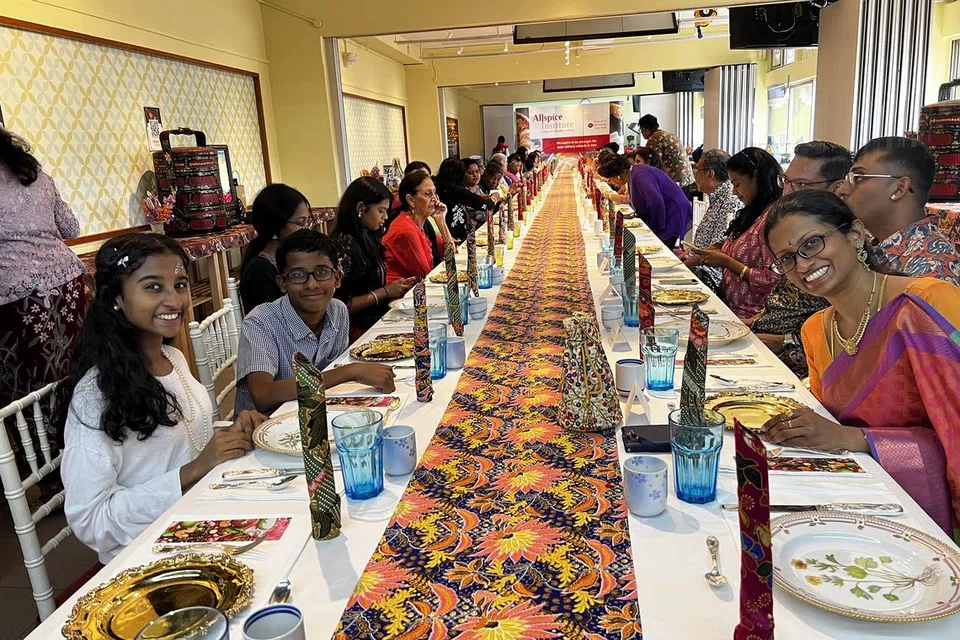At a cooking school on Saturday, an exquisitely designed set of crockery was laid out on a long table, bringing to life the rich and royal tradition of the Peranakans – the Tok Panjang feast.
“Tok” means ‘table’ in Hokkien and “panjang” means ‘long’ in Malay, reflective of the mixed roots of the Peranakans, which generally refers to a person of mixed Chinese and Malay heritage.
Around 50 members and guests of the Peranakan Indian (Chitty Melaka) Association of Singapore (PICMAS) were seated at the table at AllSpice Institute, marvelling at the artisanship behind the porcelain plates and sterling silver flatware, in eager anticipation of the dishes to be served.
They had an occasion to celebrate as well. Just three days back, on Dec 4, the kebaya, a traditional women’s garment popular in South-east Asia and an integral part of Chitty Melakan culture, was added to the UNESCO Representative List of the Intangible Cultural Heritage of Humanity.
Ms Jamuna Rani Pillay, 63, secretary of PICMAS, said: “Our great-grandmothers and grandmothers used the baju panjang, almost similar to the kebaya but with a longer top. Now, Chitty ladies wear the present-day kebaya.”
The celebratory feast was laden with diverse Peranakan dishes from the Chitty Melaka cookbook titled Heritage Food Of The Peranakan Indians: In A Chitty Melaka Kitchen, published in late 2023.
The spread was prepared by home chefs within the community and AllSpice Institute’s Chef Anup Kumar. On the plates were Peranakan delights such as kueh pie tee (crispy golden shells filled with turnips and carrots) and Chitty Melakan specialities such as roti jala and rendang.
Though steeped in Peranakan ancestry, there was a novel twist to the food served as well – veganism.
Chef Anna Eio, the trainer at the AllSpice Institute with Peranakan roots herself, explained the reason for the unique adaptation: “Earlier in the day, the AllSpice Institute hosted Dr Jane Goodall, renowned chimpanzee expert and zoologist, for lunch. She is an advocate for veganism. Hence, together with the Chitty Melakan Association, we decided to give our dishes a vegan touch.”
This meant that vegetable balls were used for the rendang dish, instead of chicken or beef. The kueh pie tee shells, which usually contain egg, were replaced with pani puri shells.
In a similar bid to bring Chitty Melaka culture to the youth, 28 students from St Joseph’s Institution and Jurong West Secondary school also launched an online virtual gallery about the Chitty Melaka community and its heritage. The gallery can be viewed at https://tinyurl.com/ChittyMelakaMuseum

